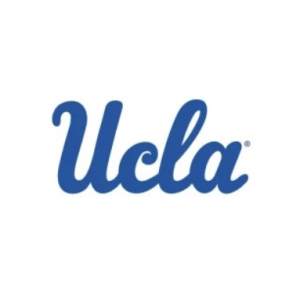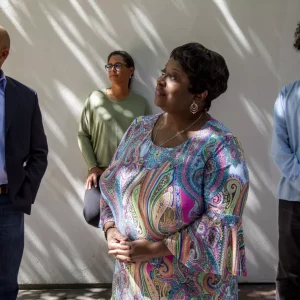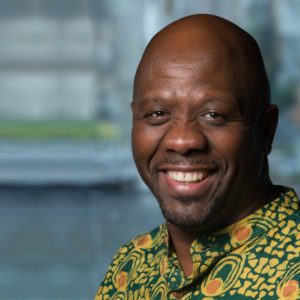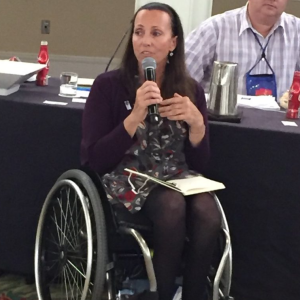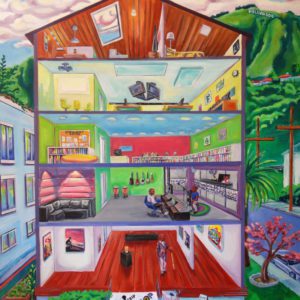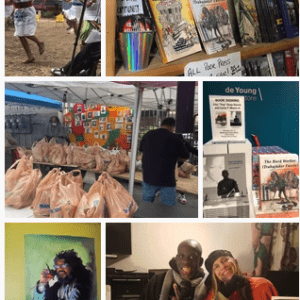EXCITING NEWS ABOUT OUR INSTITUTE
Update On My Upcoming Trip
 It’s May and this is the month that my Journey Krip-Hop in Africa from Dakar, Senegal to Cape Town, South Africa begins, May 14-24/25!
It’s May and this is the month that my Journey Krip-Hop in Africa from Dakar, Senegal to Cape Town, South Africa begins, May 14-24/25!
Because of my donors Krip-Hop Nation/Leroy Moore has raised funds to get to the 2025 annual Association of Black Anthropologists (ABA) 2025 spring conference, “Anthropology and the Black Experience,” in Dakar, West Africa downtown on May 14-18, 2025 the title of my presentation is, From John Langton Gwaltney’s The Dissenters to Krip-Hop Theory. I will concentrate on the importance of the work of John Langston Gwaltney and how l’m trying to build on it with Krip-Hop theory, music and the building of AKrip-Hop chapters and the ultimate the opening of Krip-Hop Institutes especially in African countries.
After the conference in Dakar, I’ll make my way to the University of Cape Town to present to students and professors about my studies and work. My topics that I’m planning to present at the University of Cape Town is Hip-Hop, Disability and the building of Krip-Hop Institutes globally, especially focusing on Krip-Hop chapters in Africa. And the possibility of a postdoctoral position at University of Cape Town in South Africa… As you know, I made new connections at University of Cape Town as follows:
Dr. Marlon Swai who is a Hip Hop artist from Cape Town with a background in spoken word and graphic design and a Lecturer University of Cape Town, South Africa in the Anthropology and Kharnita Mohamed, she is published and accomplished novelist as well as an anthropologist of disability in the South African context. She is a Lecturer in Social Anthropology at the University of Cape Town. She is also working on a PhD in Women’s and Gender Studies at the University of the Western Cape focused on a decolonial feminist approach to disability. Her debut novel Called to Song was published by Kwela in 2018. We are all in talks about holding a seminar so I can talk about my work/study while I’m in Cape Town, South Africa!
Once again here is the full schedule:
1. From LAX to Dakar, Senegal May 13-18 housing and ground transportation’s is provided for annual Association of Black Anthropologists (ABA) 2025 spring conference, “Anthropology and the Black Experience,” in Dakar, West Africa downtown on May 14-18, 2025 then to
2. Cape Town, South Africa, May 19- 24 my housing is:
All Africa House
43 Stanley Road
Middle Campus
University of Cape Town
Rondebosch 7701
South Africa
View here.
Again to present to students and professors about my studies and work. My topics that I’m planning to present at both the conference in Dakar, Senegal and at the University of Cape Town are Hip-Hop, Disability and the building of Krip-Hop Institutes globally, especially focusing on Krip-Hop chapters in Africa. Also to start the talks about a Postdoctoral position.
Back home LA on May 24/25.
THANK YOU FOR YOUR SUPPORT! More news from the road.
Knocking On Black Institutions’ Doors For Decades, But No More!
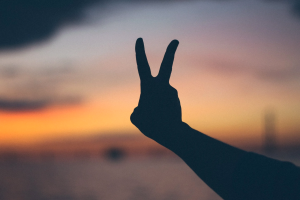 For more than twenty years off and on, I’ve been trying everything to get into Black institutions from HCBU’s to the Schomburg Center for Research in Black Culture. Now I’m a Ph.d. Student and I even had other well known names to reach out for me but still no bites. I decided in 2025 I’ll stop reaching out and go on with peeps, orgs and communities who want my art, writings, music, lectures aka work. However, if I receive an invitation, I’ll take it for sure…. It’s just shocking and hurtful when your own rejects you! That’s why my goal is to open the Krip-Hop Institute.
For more than twenty years off and on, I’ve been trying everything to get into Black institutions from HCBU’s to the Schomburg Center for Research in Black Culture. Now I’m a Ph.d. Student and I even had other well known names to reach out for me but still no bites. I decided in 2025 I’ll stop reaching out and go on with peeps, orgs and communities who want my art, writings, music, lectures aka work. However, if I receive an invitation, I’ll take it for sure…. It’s just shocking and hurtful when your own rejects you! That’s why my goal is to open the Krip-Hop Institute.
Mission:
Krip-Hop Institute (KHI) will be a cultural, activist, and inclusive platform meeting space for the community. KH I specializes in the accurate representation of those who are marginalized, especially disabled, Black, and the intersection between the Black disabled community therein. This will be achieved both locally and internationally by having a music studio, visual art gallery, archival historical data and fully suitable for technology aka international meeting space with powerful wifi, large screens and theater. Ultimately, the goal of KHI is to create an international hub for disabled and non-disabled activists, artists, and researchers around the world. KHI will be where the public, educational institutions, and cultural centers can learn about Black disabled art, music and activism. The unique distinction here is that individuals will have access to a multimodal representation of an appropriate myriad of academic historical empirically produced but start their own archives and organize disability events in their cultural centers like museums. It is essential that KHI be based in the Black and disabled community to be truly represented. Through adequate collaboration within the community, KHI will outreach to educational institutions in the prospects of gaining more allies establishing the institute’s much needed materials. Examples include but are not limited to, the acquisition of hard to find books, scholarly articles, as well as specific types of art.
Why Krip-Hop Institute:
People with disabilities make up the largest minority group in the world with a number as big as 1.3 billion people experiencing some sort of disability, this represents 16% of the world’s population. In the US there is only one museum on Disability History, National Disability History Museum in Buffalo, New York, however people with disabilities have been a part of all aspects of life including entertainment from the beginning from Blues to Hip-Hop. The Krip-Hop Institute will be a place of research, community education of disability rights, arts, justice, archiving, creative expression through visual art and music of people with disabilities locally and internationally.
Peace, Leroy
Krip-Hop Institute As Research Project to Building It
My Ph.d. goal and my lifelong work is to add to the research, writings, books, music and visual arts , awareness locally and internationally of the accomplishments of disabled people especially Black disabled musicians in the music arenas from Blues to Hip-Hop and other venues of the arts and activism. As of today in 2025 there is not one community space like museums in this country and around the world that focus and research on Hip-Hop artists with disabilities.
Because of disability activism of the late 1970’s and 1980’s only recently academia have been pushed to have disability studies. You would think that disability, Black and Hip-Hop studies would explore each other but it hasn’t thus far. Also knowing that the vast majority of disabled people would not make it into higher education aka undergrad and graduate makes sense that there needs to be a public space that provides political education, research, cultural expression, mentorship and archiving Hip-Hop arena from a disability perspective historically, politically and how that can change society locally and globally.
Although my graduate research is for the community, I also see my research builds on all three academic fields from disability, Black and Hip-Hop studies. My writings and books have been taught from high schools to colleges. Recently my writings on Hip-Hop and disability have been published in Hip-Hop textbook like the recent UCLA’s publication, Freedom Moves Hip Hop Knowledges, Pedagogies, and Futures by H. Samy Alim (Editor), Jeff Chang (Editor), Casey Wong (Editor) January 2022 and the That’s The Joint! The Hip Hop Studies Reader, Authors: Murray Forman, Mark Anthony Neal, Regina N. Bradley in November 2023. Beyond Hip-Hop studies, in 2021 I Co-wrote a curriculum and taught for a semester at University of San Francisco on Research, Teaching and Collaboration for Disability Justice by using my book, Black Disabled Art History 101 and from 2021 to present I’ve been involved in establishing Intersectional Disability Studies Strand (IDSS) under the existing Institute for Emancipatory Education (IEE) at San Jose State University. The (IDSS) at San Jose State University serves as a community-engaged, culturally sustaining space that centers disability visibility and disability as an intersectional identity.
My research once again can be looked at as theory building on already known theories in fields of Hip-Hop and disability for example building on Dr. H. Samy ALIM concept of Hip-Hop Nation Language with Krip-Hop terminology like Afro-Krip and adding to DisCrit: Disability Studies and Critical Race Theory in Education (Disability, Culture, and Equity Series) by SUBINI Annamma with my masters thesis on Krip-Hop pedagogy. Also looking at community scholarship like the real lives and writings that builds on Poor Magazine who wrote and teaches from, Poverty Scholarship Poor People-Led Theory, Art, Words & Tears Across Mama Earth and disabled community scholars like Alice Wong who wrote a chapter in a book, Centering Diverse Bodyminds in Critical Qualitative Inquiry. This book is important how to do my research because it puts the persons with disability center in qualitative research and the methods that are traditionally used for example as we use to talk about interviewing it was thought of two or group of people show up with recording equipments but now we have zoom and other online sources thus making interviewing process more accessible to disabled researchers and graduate students with disabilities like me. Doing qualitative research in a digital world makes it accessible. There is also a journal article entitled, Making Qualitative Research Inclusive: Methodological Insights in Disability Research by Annmaree Watharow, MBBS, M PSYCH MED, PhD and Sarah Wayland, BSW, PhD that I will used their accessible ways to do my qualitative research.
Is my research and what comes out of it feasible?
Throughout my years of organizing, writing, event planning and now academic studying on music and disability has led me to notice a lack of a physical place that can put out reports, articles, books, studies at the same time be a place of creative expression of disabled Hip-Hop artists aka the Krip-Hop Institute. So at this point in my past research we already know that the need is there so the major question in my upcoming research is to get data from high profiles like university of Cape Town and big organizations and community leaders to shape the data coming out of this research to convince others especially long term funders to see that the research and cultural expression that will come out of the Krip-Hop Institute will have long positive effects on communities, the Hip-Hop culture and its multi-billion dollar market so they would feel comfortable to ongoing support, partnership and funding.
Questions like, is there a market for this can be answered by looking at the World Bank and the United Nation reports saying that people with disabilities are the largest minority group worldwide and we also know that governments under title thirty of the Convention On The Rights Of Persons With Disabilities (CRPD) have to guaranty that people with disabilities are participating in cultural life, recreation, leisure and sport and this includes the arts. The Krip-Hop institute can fulfill the implementation of article thirty under the UN Treaty on Disability. Matter-of-fact Luciana Viegas of Black Disabled Lives Matter of Brazil talked about Krip-Hop Nation and working together with us in music and advocacy of Black Brazilians with disabilities at the United Nations conference of the Committee on the Rights of Persons with Disabilities, COSP. It took place from June 12th to June 18th.
There are a couple spots of weakness of the project and one is this research and institute will be the first of its kind so it will make it hard to measure results comparing it to other models. Although people with disabilities are the largest minority group in the world, they are also the poorest so the financial support in the beginning must be a combination of outside support like the UN, government, business, universities and community organizations. Timing, although we coincide with the Olympics and Paralympics coming to Los Angeles, we have only four years to get support to build this institute. Lastly the voice, rights and cultural expressions of people with disabilities still lack media, political and business attention making it hard to pitch the creation and need of a Krip-Hop Institute.
The Krip-Hop Institute can evaluate its work in many ways one important way is to stay in contact with Hip-Hop artists looking at their growth in the Hip-Hop industry, to establish a media awareness campaign, to become an educational arm in disability in the Hip-Hop industry and culture, to write reports on the status of disabled Hip-Hop artists and to continue to be a place of mentorship, cultural expression and education locally and worldwide.

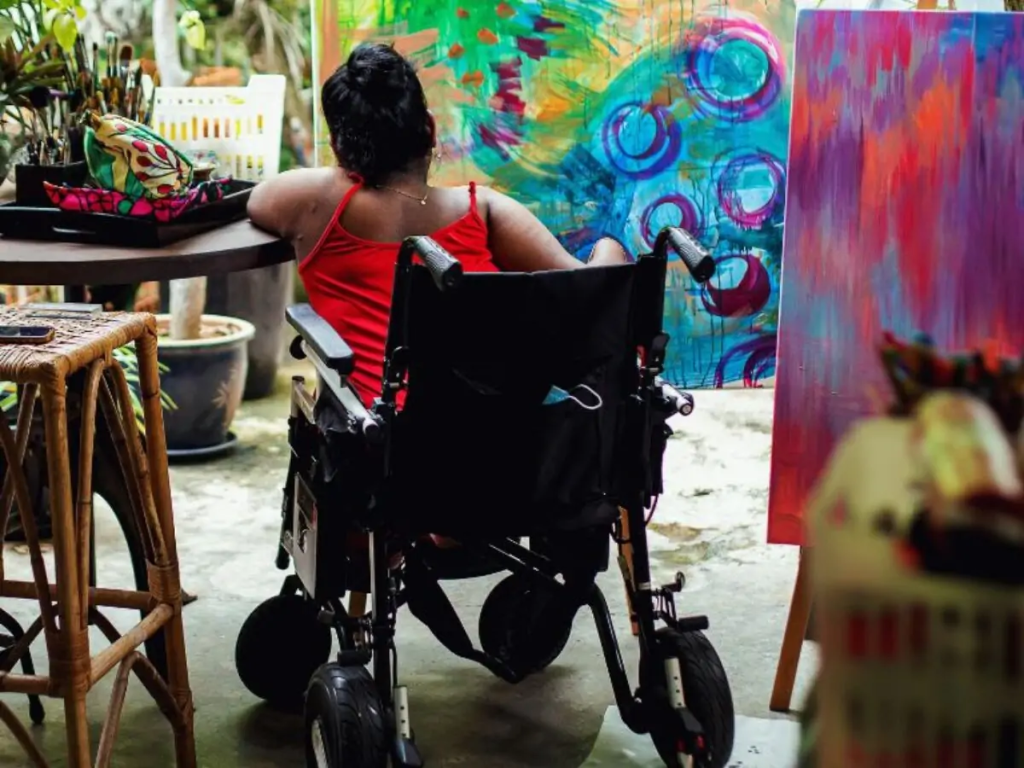
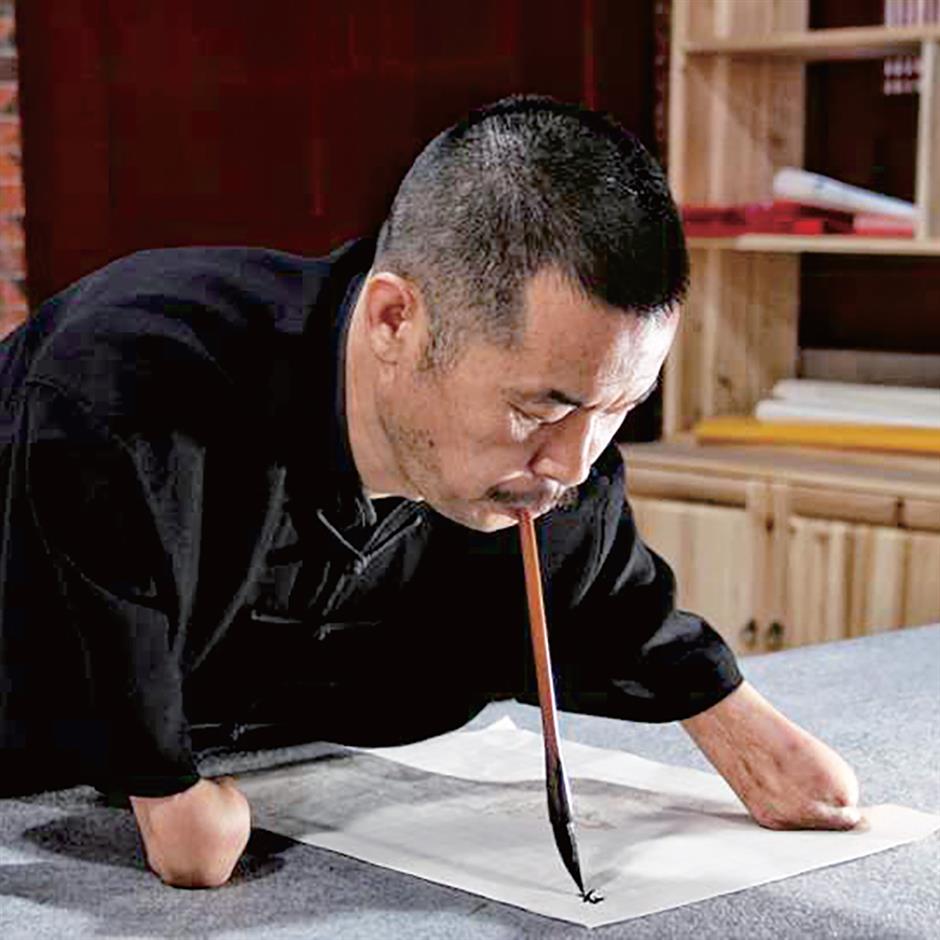
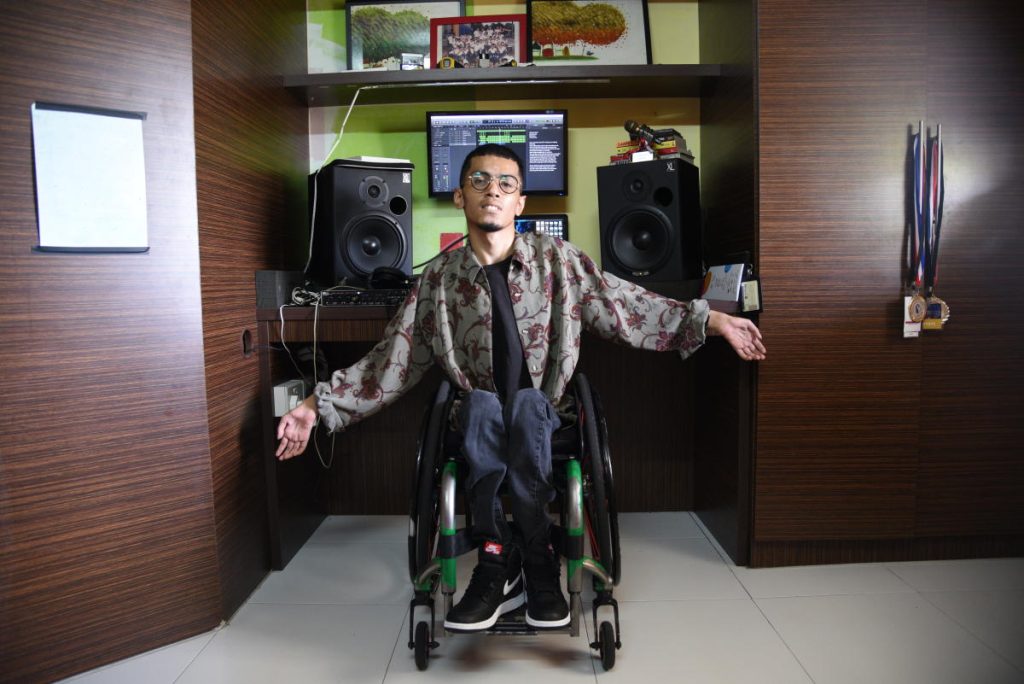

The Future: The Krip-Hop Institute & Timeline
Timing is everything! The timeline to open the Krip-Hop Institute here in Los Angeles coincides with the Olympics and Paralympics coming to LA in the Summer of 2028. The Paralympics bring international viewers into disability sports, culture and the disability politics with the host city aka Los Angeles’s views of disability from access, transportation, accessibility, arts, music, employment thus living in the host city.
We are looking to break ground in Inglewood or another LA community and finish building it by 2027. By anchoring with the Olympics and Paralympics coming to LA, we have a good opportunity to get support and funding to build and staff it. We are also trying to promote the institute as a model of disability equality in the arts arena in the Paralympics legacy program. As a former paralympician, 2021 Emmy winner of a documentary on the Paralympics, a UCLA graduate student and my twenty years in the field of disability it all equals a great possibility of making my research/lifelong work feasible.
Now in 2025, Krip-Hop Nation wants to bring together a small committee here in LA to start planning stages of building the Krip-Hop Institute for the community. This must be a we not an I thing!
The timeframe is to have the Krip-Hop Institute built before the Paralympics and Olympics opens here in LA in 2028. So time is ticking and even though I’m a full time PhD student, I know I have to get the process going.
Thank you, Leroy Moore, an international disability activist and Ph.D student at UCLA, for your support and inspirational work for this great project.
ARDO AND KRIP HOP NATION, is thrilled to announce an exciting news about owning land purchased for building our school for children with disabilities (SIMAMA Dede academy) by 2027.
In collaboration with Krip-Hop Nation, we will continue working towards SARDO’s goals of providing social Justice and Advocacy activities programs, such as community engagement in radio station programs, recreational initiatives for all people with and without disabilities.
The next step will include building office space for SARDO, and fencing the land. We’re excited for this success, and will continue to raise funds for this needed project. We welcome all contributions, regardless of amount, to help all people with disabilities and become prosperous member of the society within RORYA district, Mara region Tanzania.
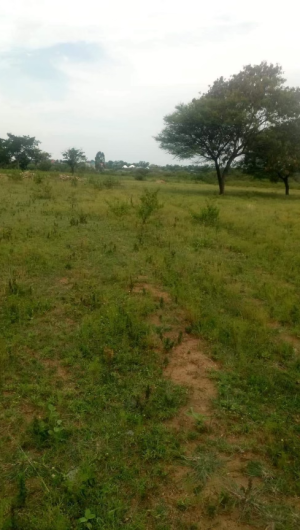
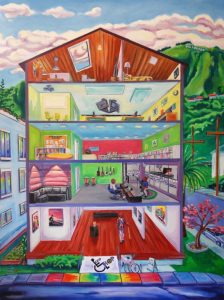 At Krip-Hop Institute, KHI, we envision a society where all cultural expression, whether it be mainstream or underground, in today’s unprecedented political social unrest, be embraced for what it is. Ideally , disabled Black artists will be positively adhered to. It is critical that the present and future disabled artists, especially Black/Brown disabled cultural workers, thinkers, and writers are studied from an anthropological non-ethnocentric perspective. We need to honor those that came before us. KHI will do this through our communities both locally and internationally, all the while making the unique contribution of having a community space to gather, perform music, learn about and display the arts, exploration of political history and current environmental educational resources. Krip-Hop Institute will be an all accessible, state of the art, fully suitable for technology physical building in the heart of Los Angeles’ Black community of Inglewood.
At Krip-Hop Institute, KHI, we envision a society where all cultural expression, whether it be mainstream or underground, in today’s unprecedented political social unrest, be embraced for what it is. Ideally , disabled Black artists will be positively adhered to. It is critical that the present and future disabled artists, especially Black/Brown disabled cultural workers, thinkers, and writers are studied from an anthropological non-ethnocentric perspective. We need to honor those that came before us. KHI will do this through our communities both locally and internationally, all the while making the unique contribution of having a community space to gather, perform music, learn about and display the arts, exploration of political history and current environmental educational resources. Krip-Hop Institute will be an all accessible, state of the art, fully suitable for technology physical building in the heart of Los Angeles’ Black community of Inglewood.
Mission:
Krip-Hop Institute is a cultural, activist, and inclusive platform meeting space for the community. KHI specializes in the accurate representation of those who are marginalized, especially disabled, Black, and the intersection between the Black disabled community therein. This will be achieved both locally and internationally by having a music studio, visual art gallery, archival historical data and fully suitable for technology aka international meeting space with powerful wifi, large screens and theater. Ultimately, the goal of KHI is to create an international hub for disabled and non-disabled activists, artists, and researchers around the world. KHI will be where the public, educational institutions, and cultural centers can learn about Black disabled art, music and activism. The unique distinction here is that individuals will have access to a multimodal representation of an appropriate myriad of academic historical empirically produced but start their own archives and organize disability events in their cultural centers like museums. It is essential that KHI be based in the Black and disabled community to be truly represented. Through adequate collaboration within the community, KHI will outreach to educational institutions in the prospects of gaining more allies establishing the institute’s much needed materials. Examples include but are not limited to, the acquisition of hard to find books, scholarly articles, as well as specific types of art.
Why Krip-Hop Institute:
People with disabilities make up the largest minority group in the world with a number as big as 1.3 billion people experiencing some sort of disability, this represents 16% of the world’s population. In the US there is only one museum on Disability History, National Disability History Museum in Buffalo, New York, however people with disabilities have been a part of all aspects of life including entertainment from the beginning from Blues to Hip-Hop. The Krip-Hop Institute will be a place of research, community education of disability rights, arts, justice, archiving, creative expression through visual art and music of people with disabilities locally and internationally.
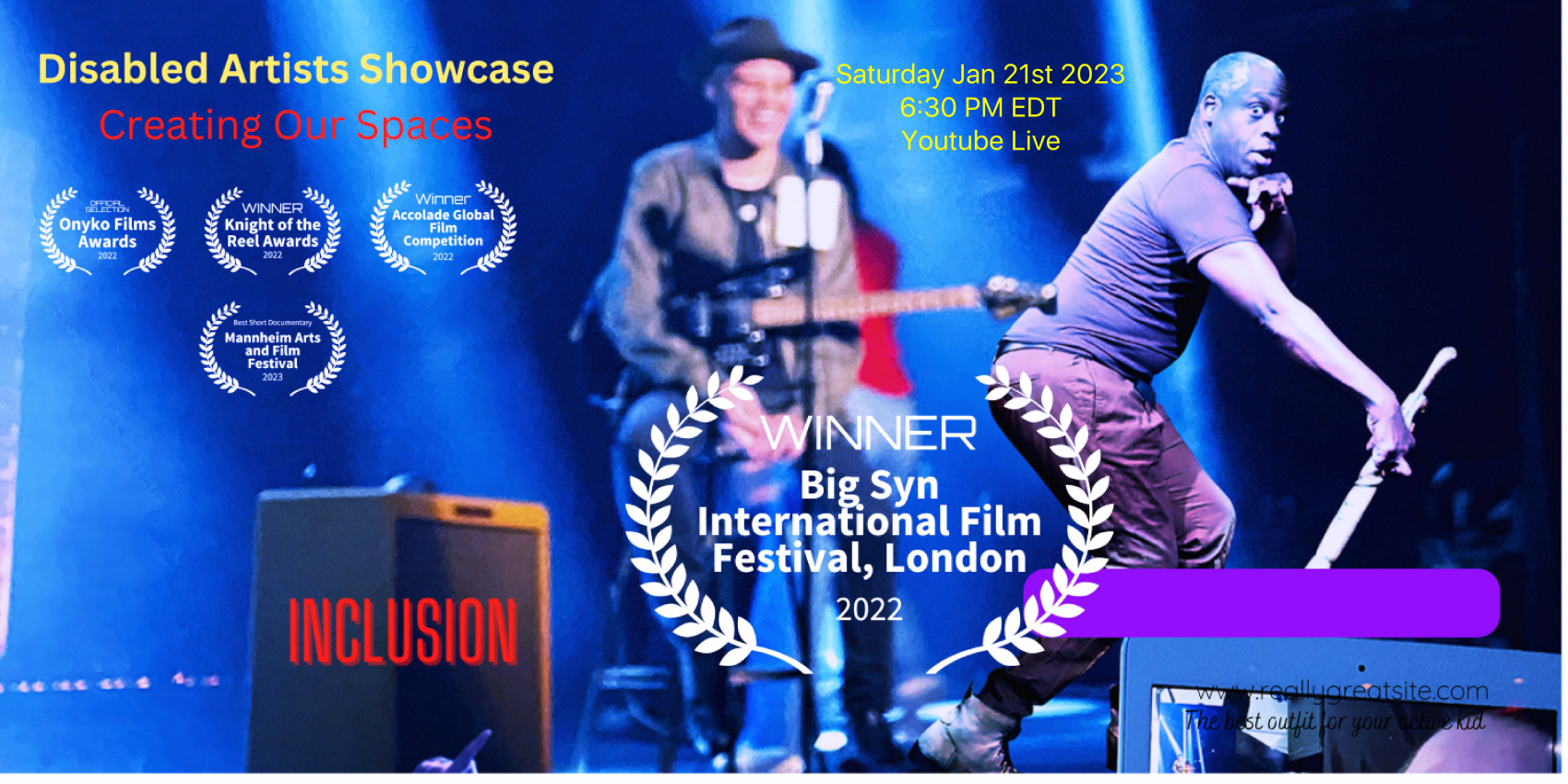
Brief History:
2021 Leroy Moore and the headquarters of Krip-Hop Nation moved from Berkeley, CA to Los Angeles, CA for a Ph.D. program in Anthropology at UCLA. In 2022 Leroy meets up with Candace Cable who in 1992, Candace Cable became the first woman to medal at the summer and winter Paralympic Games. She has also continued to work in the sports world. She served as the Vice-Chair of the LA2024 bid for the Olympic and Paralympic Games, and helped to bring the Games back to Los Angeles in 2028. She was also a Paralympic Skiing Representative for the United States Olympic Committee between 2012 and 2016. And Leroy reconnected with a Pastor who moved from Oakland to LA. Reverend Kelvin Sauls is a faith-based community activist and international social and economic justice advocate. He is the former Senior Pastor at Holman United Methodist Church in Los Angeles, CA. Reverend Sauls brings years of experience in, and passion for multi-generational congregational vitalization for meaningful community transformation. Being born and raised in Johannesburg, South Africa, his work focuses on the intersection of social justice from South Los Angeles to South Johannesburg. Now in 2023 Leroy is creating a team of supporters of his vision of the Krip-Hop Institute to raise community support, funds to build the institute in the Black community of Inglewood, CA. The building of Krip-Hop Institute should be completed by 2026 and open its doors by the Summer of 2027 a year before the Olympics/Paralympics comes to Los Angeles.
Where:
Krip-Hop Institute will start in Los Angeles, CA in the neighborhood of Inglewood before the Olympics/Paralympics in 2028 then Johannesburg, South Africa. KHI can be an international model of disability cultural expression, community organizing, public education thus implementing the promises of the article 30 of the United Nations Convention On The Rights Of Persons With Disabilities (CRPD) of 2006.
Values:
KHI at its core is about equity and opportunity. Our work will be guided and informed by our beliefs and commitments to:
- Use politically correct language
- Not to put down other minority.
- Use our talents to advocate and teach not only about ourselves but about the system we live under as it pertains to being a person of color in conjunction with having a disability.
- Challenge mainstream & all media on ways they frame disability.
- Increase voices that are missing from within and in popular culture.
- Recognizing our disabled ancestors, knowing that we are building on what they left us and nothing is new, just borrowed.
- To increase disability solidarity and collaboration around the world.
- Help to increase the visibility in Black museums, cultural centers of Black disability art, music and historical involvement in artistic/activism of the times.
- The Disability Justice’s ten principles.
- Be a space for the Black community to gain disability/Krip-Hop political education, cultural expression, activism while understanding the historical importance of Black disabled individuals at various different time periods in history.
Make A Difference - Donate Today
All donations support securing and developing our brick and mortar Krip-Hop Institute building. Success is never the result of a single individual doing everything it takes to achieve a goal. In every case, help is there for the journey. Whether cycling, boxing, or any other sport, winners have support. And, we need your support to achieve our goals.
Our Partners
